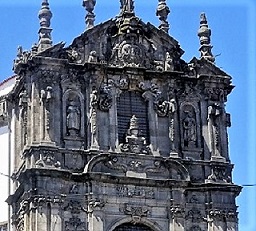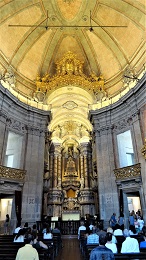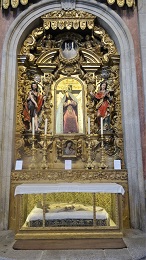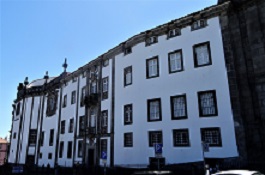


|
|
|
|||||||||||||||
|
|
||||||||||||||||
|
|
|||
|
|
Porto Church of the Brotherhood of the Clergy (Clérigos Church)
The architectural complex of Clérigos, has been considered a National Monument since 1910, is one of the main points of interest in Porto: It consists of the church, its tower and a museum. The Brotherhood of the Clerigos was created in 1707 to provide assistance and protection of the clergy of Porto. The project to build the church, which was designed by Nicolau Nasoni, Italian architect and painter, was approved in December 1731, with the work starting in April 1732. The church was the first church in Portugal with an ellipse-shaped plan. It also has the unique feature of a gallery surrounding the entire nave, making it possible to observe the church as a whole. It contains numerous gilded carvings which are enhanced by the entrance of light through the windows. The construction of the church itself was finished in 1749, although completing the fixtures and the enlargement of the chapel would prolong the work, with it finally being completed in 1750. The stairway in front of the church was completed in 1763. The main façade of the church has a central frieze above the windows which incorporates symbols of worship and an indented broken pediment which is heavily decorated with garlands and shells which are baroque motifs.  The interior consists of the main chapel which includes the seats and the two organs of Iberian or "Portuguese" pipes, construction of which began simultaneously in 1774. The seats were finished in 1777 and the organs in 1779.  The church’s dome, which rests on six pillars, contains the coat of arms of the Brotherhood of the Clerics, carved in faux granite. The main rococo-inspired altar is made of polychromed marble. Designed by Manuel dos Santos Porto it consists of a throne crowned by the image of the Patroness, Our Lady of the Assumption. At each side of the altarpiece are two painted wooden sculptures of the co-patron saints of the Brotherhood of the Clerics, St. Peter ad Vincula and St. Philip Neri. The church contains three other altars: The Blessed Sacrament, Saint Emygdius, and Saint Anne.   Located at the back of the building is the monumental tower of the church. Standing 75.6 metres high, the tower dominates the city and has become the symbol of Porto. It has six floors and visitors can climb the 240 steps to the top which provides good views over Porto. Built between 1754 and 1763 the Tower was completed with the placing of the iron cross on top and the image of St Paul in the niche above the door. The baroque decoration reflects the influence of the Roman Baroque, the actual design being inspired by Tuscan campaniles. Connecting the church and the tower is the House of the Brotherhood, which in 2014 became a museum and was opened to the public.  The House of the Brotherhood was constructed between 1754 and 1758 and was where the Brotherhood of the Clerics had their private quarters. Today these rooms contain a collection of artefacts dating from the 13th century and consists of paintings, sculptures, furniture and jewellery items. Many of these items are displayed in the infirmary which operated until the end of the 19th century. Other rooms are dedicated to specific exhibitions such as images of Christ, crucifixes, and the Holy Thursday Urn, which is a carved and gilded wood receptacle where the wafer consecrated on Holy Thursday is kept.  Visit Official Site |
|
|
|
|
|||
All Photographs were taken by and are copyright of Ron Gatepain
| Site Map |